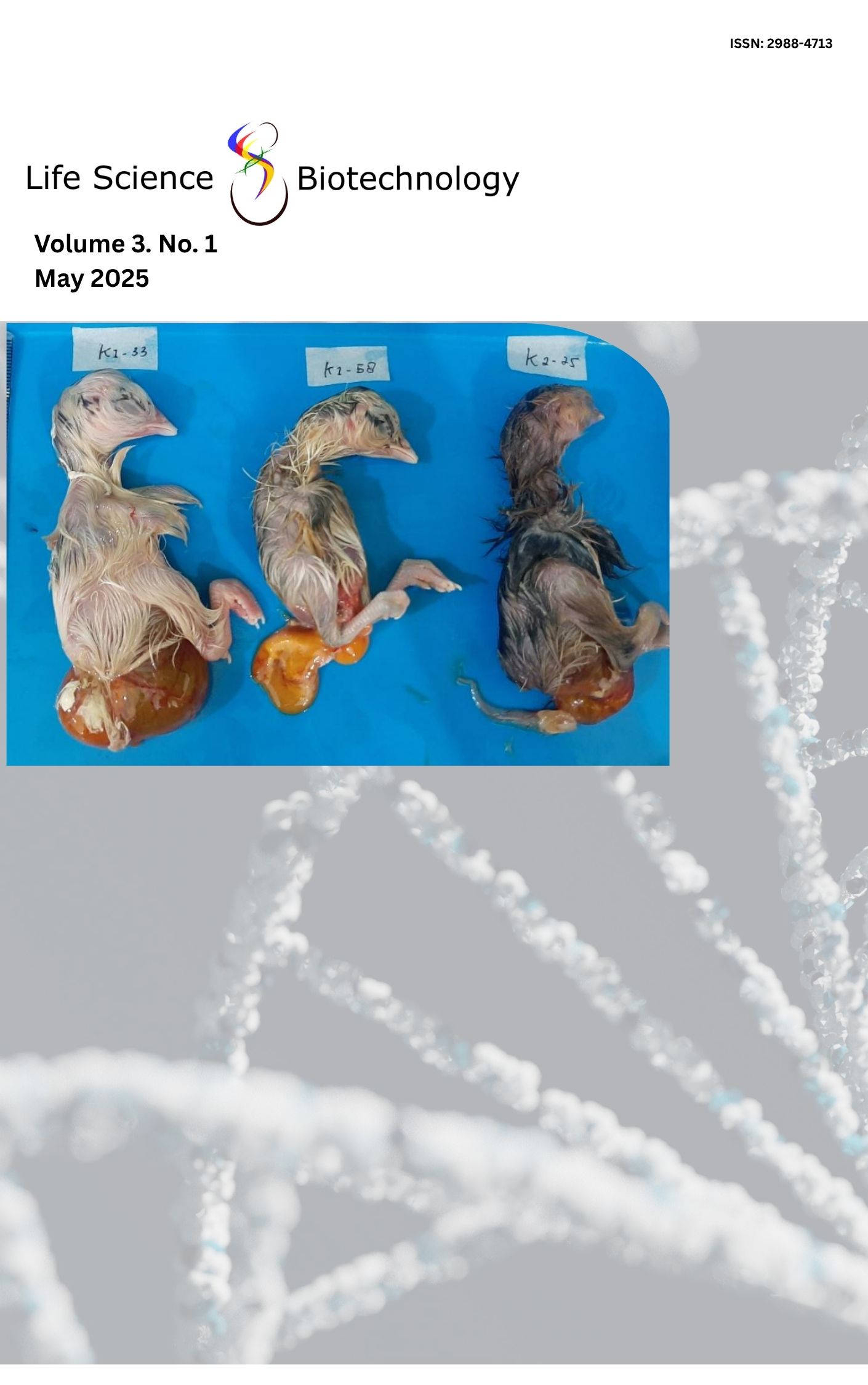Phylogenetic Analysis of Manihot sp. Based on matK and rbcL Markers
Keywords:
Cassava, GenBank, Manihot esculenta, Neighbor Joining, PhylogeneticAbstract
Cassava (Manihot sp.) is a staple crop of major economic and ethnomedicinal importance. Understanding the phylogenetic relationships within the genus Manihot is essential for clarifying its taxonomy and supporting genetic improvement programs. This study aimed to reconstruct the phylogeny of several Manihot species using two chloroplast DNA markers, matK and rbcL. Sequence data were retrieved from the GenBank database, and Ricinus communis was designated as the outgroup. Phylogenetic analyses were performed using the Neighbor-Joining (NJ) and Maximum Likelihood (ML) methods, each with 1,000 bootstrap replications to assess branch support. The resulting trees consistently clustered Manihot esculenta within a well-supported monophyletic group, indicating a close genetic relationship with other congeners. Distinct clades corresponding to genetic similarity were also observed among the analyzed species. These findings enhance current knowledge of Manihot systematics, providing molecular evidence that supports its taxonomic classification. Furthermore, the results contribute valuable insights for cassava breeding and conservation efforts through improved understanding of its evolutionary relationships.
Downloads
Downloads
Published
Issue
Section
License
Copyright (c) 2025 Wakiatil Rosida, Fuad bahrul Ulum, Mukhamad Su'udi

This work is licensed under a Creative Commons Attribution-NonCommercial 4.0 International License.



